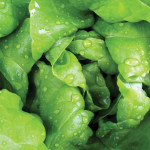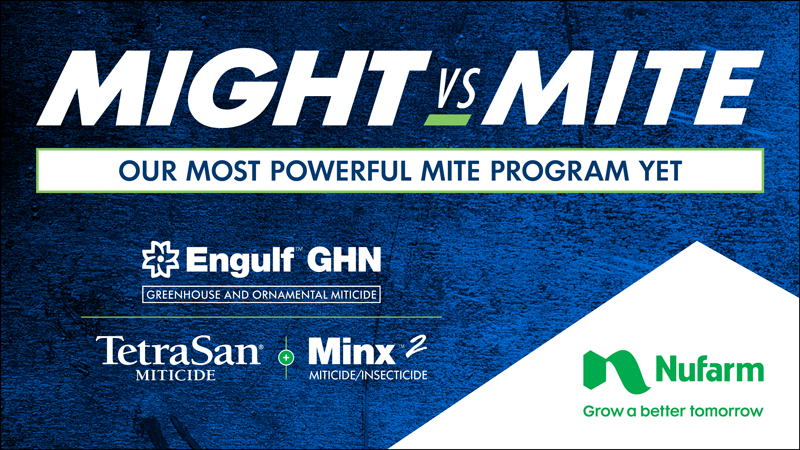Keeping Your Greenhouse Fruits And Vegetables Safe: Sanitation Food Safety Best Practices
Sanitation is the foundation of any successful food safety program, and the effectiveness of sanitation programs depends on the training, policies and protocols that companies maintain. Sanitation standard operating procedures (SSOP) are protocols describing how workers should execute cleaning and sanitation processes.
After reading this article, you should be able to: 1) understand definitions related to sanitation; 2) distinguish cleaning from sanitizing and understand chemical options for each; 3) understand the factors that influence the effectiveness of chemicals used for cleaning and sanitizing and 4) learn about specific written policies that should be present within your operation.
Cleaning Versus Sanitizing
Cleaning is the process of removing debris (e.g., organic matter and soil) from a surface, while sanitizing is the reduction of microorganisms to levels safe for public health. To have an effective sanitation program, both cleaning and sanitizing processes must be conducted. Cleaners and sanitizers are sold in gas, foam and liquid forms, but liquids are the most common form used in agriculture.
It is important to read the label of the cleaner or sanitizer to determine if it is approved for food contact surfaces, non-food contact surfaces or produce surfaces. Some are approved for all three, but the recommended concentrations may be different due to the potential for chemical residues (e.g., liquid chlorine).
Cleaners are mixtures of different ingredients designed to remove debris from a surface. The five basic types of cleaners are basic alkalis, complex phosphates, surfactants, chelating agents and acids. Removing debris in the greenhouse and production systems is important so that the debris do not reduce the efficacy of the sanitizers. Using cleaners is common on contact surfaces but not for produce.
The four main sanitizer groups are chlorine, iodophors, organic acids and quaternary ammonium. Chlorine, organic acids and quaternary ammonium are the most common categories utilized for food contact surfaces, while organic acids and chlorine are the most common categories for produce surfaces. Hydrogen peroxide and peroxyacetic acid are the most common combinations in sanitizers for produce.
The correct order for cleaning and sanitizing a food contact and non-food contact surface is 1) rinse; 2) clean; 3) rinse; 4) sanitize and 5) rinse (may not be required with all sanitizers); whereas the correct order for cleaning and sanitizing of produce is 1) rinse; 2) sanitize and 3) rinse (may not be required with all sanitizers).
For additional guidance on choosing the appropriate products, please refer to Iowa State University Extension and Outreach Publication PM 1974c and 1974d (bit.ly/isuoutreachpub).
Factors That Affect Chemical Effectiveness
The “cleanability” of surfaces within your operation is dependent on the surface material and structure. Missing surface materials, along with the presence of cuts and holes, can result in harborage sites for harmful microorganisms. All surfaces within the greenhouse should be cleaned and sanitized on a regular basis to prevent cross-contamination. The effectiveness of chemicals used in a sanitation program depends on several factors — including water quality, debris, solution temperature and pH, the duration the chemical is on the surface and the amount of pressure applied.
Water quality. The water source should be free of pathogens and tested on a regular basis. Water hardness, the amount of calcium and magnesium in water, reduces the effectiveness of cleaners and sanitizers. If water is too “hard,” the concentration of cleaner or sanitizer may need to increase to compensate for the reduced efficacy. Reverse osmosis, zeolite systems, ion exchanges and soda-lime systems are methods to soften the water entering your facility.
Debris. Presence of debris (e.g., organic matter, soil, etc.) reduces the effectiveness of liquid sanitizers by binding active ingredients. Pre-washing surfaces and produce can reduce debris in wash solutions.
Temperature and pH. Some chemical cleaners and sanitizers are not effective or are less effective at cold or hot temperatures and at high or low pH. Most cleaners and sanitizers require water 125°F or lower and a neutral pH (6 to 8).
Application. When applying chemical cleaners and sanitizers, it is important to read the instructions to determine the duration the compound must stay on the surface to be effective and if a rinse step is needed. Most cleaners and sanitizers require a wait time before rinsing occurs to be effective, and not all chemical sanitizers require a rinse step prior to operation. The amount of pressure applied also affects the efficacy of the cleaning and sanitizing step. With many cleaners, there needs to be a scrub that occurs to remove debris, while most chemical sanitizers do not require scrubbing or specific pressure.
Store Chemicals Securely
As discussed in our previous article, “Best Practices For Worker Hygiene And BioSecurity” it is important to keep all chemicals secure and labeled within your facility. All cleaners and sanitizers should be placed in a location that is not in direct contact with food items and is away from the production area. Only trained workers should have access to the chemicals.
Train Workers To Clean And Sanitize Correctly
Sanitation programs are essential for preventing and removing food safety concerns. Training of employees on how to properly clean and sanitize takes effort and time.
Workers should be trained in the operation’s SSOP, and these procedures should include:
• Person performing the task (who)
• Purpose for doing the task (why)
• What the task is (what)
• Steps for completing the task (how)
These should also include:
• The frequency the task is done
• What critical limits (e.g., concentration, time, pH, temperature, etc.) must be applied to the task
• Identification of corrective actions if the task is performed incorrectly (e.g., re-cleaning or re-mixing cleaner)
• Records showing who completed the task with a signature, time and date, along with a monitoring program to ensure the task is completed to satisfaction
Training should occur for each SSOP prior to working, periodically during employment and as needed for problems.
Examples of SSOPs include:
• Condition and cleanliness of food contact surfaces (e.g., presence of cracks, mineral scale buildup)
• Mixing of cleaners or sanitizers (e.g., approved chemicals for food contact surfaces, non-food contact surfaces and produce, and instructions of use)
• Cleaning food contact surfaces (e.g., table, tanks, rafts, tubes)
• Cleaning non-food contact surfaces (e.g., floors, walls, coolers)
• Hand washing and toilet facilities (e.g., cleanliness and supplies check)

Evaluate Your Sanitation Practices
This article focused on sanitation practices within the greenhouse that can reduce food safety risks. Your first assignment for this article is to evaluate the food contact surfaces within your facility. Determine if tables, tanks, PVC piping and other surfaces that touch your produce are food-grade and cleanable. Your second task is to evaluate your sanitation program. Are your employees fully trained and knowledgeable on how to keep your facilities clean and sanitized? Remember, every action taken is a step toward a positive food safety culture.
For more on food safety:
Part One: Overview Of Best Food Safety Practices
Part Two: Soilless And Hydroponic Systems
Part Three: Worker Hygiene And Biosecurity In The Greenhouse









